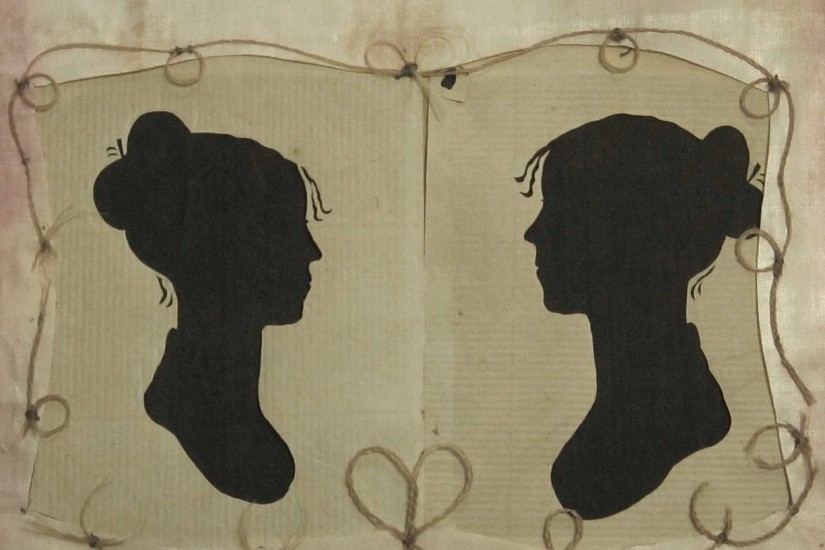Among the dozens of works on display in a new show at the Smithsonian’s National Portrait Gallery is one that is possibly the first depiction of a same sex couple—the silhouettes of Sylvia Drake and Charity Bryant of Weybridge, Vermont, entwined in braided human hair that is also shaped into a heart.
“Can you imagine an oil painting of these two women from that era” asks Asma Naeem, the National Portrait Gallery curator of prints, drawings and media arts, who curated the new show Black Out: Silhouettes Then and Now and authored its catalog.
William Cullen Bryant, Charity’s nephew, wrote in 1843 of their relationship: “If I were permitted to draw aside the veil of private life, I would briefly give you the singular, and to me most interesting history of two maiden ladies who dwell in this valley. I would tell you how, in their youthful days, they took each other as companions for life, and how this union, no less sacred to them than the tie of marriage, has subsisted, in uninterrupted harmony for more than forty years. . . but I have already said more than they will forgive me.”
“Silhouettes allowed these kinds of stories to be told,” says Naeem. “It’s important to note that people of all backgrounds, of all sexual orientation, have been in this country from the very beginning. That allows us to tell that story.”
The bold new show about an old art form looks at its complex historical, political and sociological underpinnings. It is not only the first major museum exhibition to explore the popular art form of cut paper profiles, but the show also digs deeper into how quick and inexpensive process that offered “virtually instantaneous likenesses to everyone from presidents to the enslaved,” says the museum’s director Kim Sajet.
